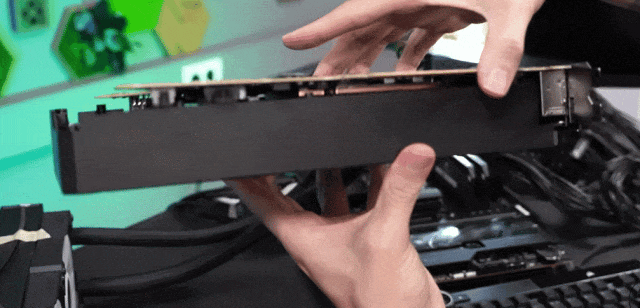Foreign Guy Manually Modifies Consumer RTX 5090 to Beat Giant RTX Pro 6000
One modified ASUS ROG Astral LC RTX 5090 with shunt mod outperforms the $10,000 RTX Pro 6000.
"Shunt Mod" is a high-risk hardware-level circuit modification that bypasses power and current limits in high-performance graphics cards and motherboards.
This astonishing achievement comes from hardware overclocking expert Der8auer (Roman Hartung).
He is renowned for extreme overclocking of GPUs, CPUs, and other hardware.

Der8auer states he hasn't performed shunt mod on a GPU for a while. This time, the goal was to unlock power limits and see how much performance could be gained by doing so.
Power Limit Enhancement Modification
Der8auer used a shunt mod to bypass power restrictions. However, this method can be risky, potentially damaging the GPU over time if not done carefully. The high strain on the 16-pin power connector at 800W also raises safety concerns.
So, what is an ideal shunt mod? Der8auer waited until he had a high-efficiency all-in-one liquid cooling (AiO) GPU, which better handles higher power loads. His tests showed the ASUS ROG Astral LC RTX 5090 runs quieter than the air-cooled version and offers more stable performance at higher power levels, with ASUS GPU Tweak III providing extensive parameter adjustments and monitoring.
Initial benchmarks showed the liquid-cooled RTX 5090 remained quiet under load at 600W, with the ability to handle more power. Der8auer concluded that the 600W limit significantly restricts overclocking potential.
The modification process is straightforward: it involves changing the resistor near the power interface to trick the control circuit into thinking the power draw is lower than actual, allowing higher power input.

Based on Der8auer's resistor replacement plan, the GPU can theoretically handle about 30% more power without detection.

Der8auer also used WireView to monitor real power consumption. The 16-pin power connector on the Astral series cards has pin sensing, providing another way to monitor input power in real-time, which remains useful.
After modification, the GPU's power increased from 660W to 720W, with core frequency reaching 2,950MHz. Frame rates improved from 146 to 152 FPS, surpassing the $10,000 RTX Pro 6000.
Under prolonged load, GPU temperature stays around 60°C, memory at 80°C. Power consumption measured with hardware tools shows 750W to 790W, about 200W higher than the display reading.



Der8auer notes this modification is suitable for liquid-cooled GPUs, especially AIO or custom liquid cooling cards. It may not be suitable for air-cooled cards due to heat dissipation issues.
In summary, the modified RTX 5090 slightly surpasses the $10,000 RTX Pro 6000, but with significantly higher power consumption compared to unmodified models and professional cards with 96GB VRAM.